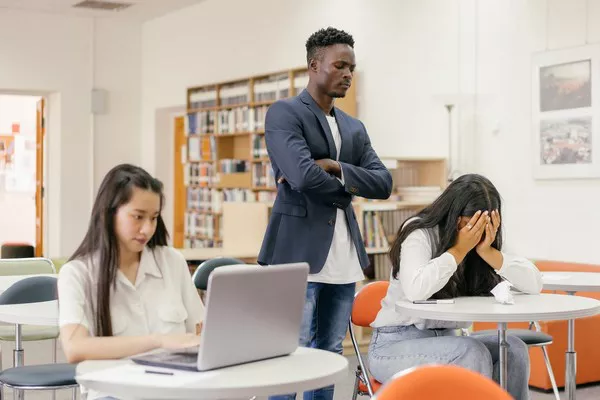The question of whether best friends can fall in love is one that resonates deeply with many people. It touches on the fundamental nature of human relationships and the complex interplay between friendship and romance. From a psychological perspective, the transition from a platonic friendship to a romantic relationship involves multiple layers of emotional, cognitive, and social factors. This article delves into the dynamics of friendship and romantic attraction, examining the conditions under which best friends may develop romantic feelings and the psychological mechanisms behind this phenomenon.
Understanding Friendship and Romantic Love
Before exploring how best friends might fall in love, it is essential to understand the nature of both friendship and romantic love. Each relationship type has distinct characteristics, although they can overlap in meaningful ways.
Defining Friendship
Friendship is typically characterized by mutual respect, trust, and shared experiences. It involves emotional support, companionship, and a sense of connection. Friendships can vary in depth and intimacy, but they generally include:
Emotional Support: Friends offer comfort, encouragement, and understanding.
Shared Interests: Common activities, values, and interests often form the basis of a friendship.
Mutual Trust: Trust is foundational in friendships, involving honesty and reliability.
Social Companionship: Friends enjoy spending time together and engaging in social activities.
Defining Romantic Love
Romantic love, on the other hand, is characterized by intense emotional and physical attraction, along with a desire for a committed relationship. It often includes:
Passion: Romantic love typically involves a strong physical and emotional attraction.
Intimacy: A desire for deep emotional connection and closeness.
Commitment: A willingness to invest in a long-term relationship and navigate its challenges.
Exclusive Bond: Romantic relationships often involve a level of exclusivity and dedication that goes beyond friendship.
The Overlap Between Friendship and Romance
The overlap between friendship and romance can create a fertile ground for romantic feelings to develop. Several psychological and relational factors contribute to this transition.
1. Emotional Intimacy and Connection
One of the strongest predictors of romantic attraction is emotional intimacy. In close friendships, individuals often share their innermost thoughts, feelings, and experiences. This level of emotional connection can foster a sense of closeness and understanding that may evolve into romantic feelings.
Shared Vulnerability: Sharing personal vulnerabilities and supporting each other through challenges can create a deep emotional bond that may lead to romantic attraction.
Mutual Understanding: A strong understanding of each other’s needs, desires, and values can lay the groundwork for romantic feelings.
2. Physical Attraction
While friendship is typically non-romantic, physical attraction can play a role in the development of romantic feelings. Physical attraction is influenced by both biological and psychological factors.
Chemistry: The concept of “chemistry” involves an unconscious attraction to certain physical and personality traits. In a close friendship, this chemistry may become more pronounced, leading to romantic interest.
Proximity and Familiarity: Spending a significant amount of time together can increase familiarity and potentially enhance physical attraction.
3. Cognitive Dissonance
Cognitive dissonance theory suggests that when individuals experience conflicting emotions or beliefs, they may adjust their attitudes to resolve the conflict. In the context of friendship, if someone begins to develop romantic feelings for a close friend, cognitive dissonance may occur.
Re-evaluating the Relationship: Individuals may start to view the friendship through a romantic lens, leading them to reconsider their feelings and the nature of their relationship.
Resolving Conflict: To resolve the dissonance between their feelings and the platonic nature of the friendship, individuals may acknowledge or act on their romantic feelings.
See Also: How Long is It Normal Before Saying “I Love You”?
4. Social and Cultural Influences
Social and cultural factors also play a role in the transition from friendship to romance. Cultural norms, societal expectations, and personal experiences can influence how individuals perceive and act on romantic feelings.
Cultural Expectations: In some cultures, close friendships between individuals of the opposite sex may be more likely to evolve into romantic relationships due to societal norms and expectations.
Personal Experiences: Previous romantic experiences and individual beliefs about love and friendship can shape how one responds to romantic feelings for a best friend.
The Psychological Dynamics of Falling in Love with a Best Friend
The process of falling in love with a best friend involves several psychological dynamics that can influence the development and outcome of the relationship.
1. Attachment Theory
Attachment theory provides insights into how early relationships with caregivers influence later romantic relationships. According to attachment theory, individuals with secure attachment styles are more likely to form healthy, stable romantic relationships. Those with insecure attachment styles may experience challenges in romantic relationships, including falling in love with a friend.
Secure Attachment: Individuals with a secure attachment style are comfortable with intimacy and are likely to approach a romantic relationship with a best friend in a balanced, positive manner.
Insecure Attachment: Those with anxious or avoidant attachment styles may struggle with the transition from friendship to romance, experiencing anxiety or discomfort in the process.
2. The Role of Reciprocity
Reciprocity, or the mutual exchange of feelings and support, is crucial in both friendships and romantic relationships. In the context of falling in love with a best friend, reciprocity can influence the development of romantic feelings.
Mutual Feelings: If both individuals develop romantic feelings, the relationship may naturally evolve into a romantic partnership. The mutual exchange of affection and support can strengthen the bond and facilitate the transition.
Unrequited Feelings: If one person develops romantic feelings while the other does not, it can lead to challenges in the friendship. Unrequited feelings may result in emotional discomfort, changes in the relationship dynamics, or potential dissolution of the friendship.
3. The Impact of Communication
Effective communication is essential in navigating the transition from friendship to romance. Open, honest conversations about feelings, expectations, and boundaries can help manage the complexities of the evolving relationship.
Expressing Feelings: Clearly expressing romantic feelings can help both individuals understand each other’s perspectives and make informed decisions about the future of the relationship.
Negotiating Boundaries: Establishing boundaries and discussing expectations can prevent misunderstandings and ensure that both parties are comfortable with the direction of the relationship.
Potential Challenges and Considerations
While falling in love with a best friend can be a positive and fulfilling experience, it also comes with potential challenges and considerations.
1. Risk of Relationship Change
The transition from friendship to romance can alter the dynamics of the relationship. It is essential to consider how the change may impact both individuals and the relationship as a whole.
Change in Dynamics: Romantic involvement may introduce new dynamics and expectations, potentially affecting the level of intimacy and comfort in the relationship.
Risk of Loss: There is a risk that the romantic relationship may not work out, potentially leading to the loss of the friendship. It is important to weigh the potential benefits and risks before pursuing a romantic relationship with a best friend.
2. Navigating Social and Family Reactions
The reactions of social circles and family members can influence the experience of falling in love with a best friend. Social and familial reactions may vary, and navigating these responses requires sensitivity and communication.
Social Reactions: Friends and acquaintances may have opinions or judgments about the evolving relationship. It is essential to consider how social dynamics may impact the relationship and address any concerns or questions.
Family Reactions: Family members may have their own perspectives on the relationship. Open communication with family members can help manage their reactions and provide support.
3. Balancing Expectations and Realities
Balancing expectations and realities is crucial in transitioning from friendship to romance. It is important to have realistic expectations about the relationship and address any potential challenges.
Managing Expectations: Understand that romantic relationships may differ from friendships in terms of dynamics and expectations. It is important to manage expectations and be prepared for potential challenges.
Addressing Challenges: Be proactive in addressing any challenges that arise, including communication issues, conflicts, or changes in the relationship dynamics.
Conclusion
Falling in love with a best friend is a complex and multifaceted experience that involves a range of psychological, emotional, and social factors. The transition from friendship to romance can be influenced by emotional intimacy, physical attraction, cognitive dissonance, and cultural factors. Understanding these dynamics and navigating the potential challenges can help individuals make informed decisions about pursuing a romantic relationship with a best friend.
True love can indeed blossom from a deep and meaningful friendship, but it requires careful consideration and communication. By acknowledging the complexities of the transition and addressing any challenges that arise, individuals can navigate this process with sensitivity and intention. Whether the relationship evolves into a romantic partnership or remains a cherished friendship, the experience of exploring and deepening a connection with a best friend can be profoundly enriching and fulfilling.
Related topics:




























